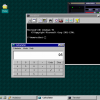В августе 2016 в очередной раз состоялось мероприятие Black Hat USA.
Black Hat Conference — конференция по компьютерной безопасности, объединяющая множество людей, интересующихся информационной безопасностью. Конференцию посещают как представители федеральных агентств и корпораций, так и хакеры. Briefings регулярно проходит в Лас-Вегасе, Амстердаме и Токио. Мероприятие, предназначенное специально для Федеральных служб, проводится в Вашингтоне, округ Колумбия.
Предлагаю вашему вниманию видеозапись и слайды одного из наиболее интересных докладов конференции «Ядро Linux, спрятанное внутри Windows 10». Автором доклада выступил небезызвестный исследователь компьютерной безопасности Алекс Ионеску, автор бестселлера «Windows Internals».
Слайды и листинги кода к выступлению Алекса Ионеску. К сожалению, пока доклад доступен только на английском языке.
As it's implemented using a full-blown, built-in, loaded-by-default, Ring 0 driver with kernel privileges, this not a mere wrapper library or user-mode system call converter like the POSIX subsystem of yore. The very thought of an alternate virtual file system layer, networking stack, memory and process management logic, and complicated ELF parser and loader in the kernel should tantalize exploit writers — why choose from the attack surface of a single kernel, when there's now two?
But it's not just about the attack surface — what effects does this have on security software? Do these frankenLinux processes show up in Procmon or other security drivers? Do they have PEBs and TEBs? Is there even an EPROCESS? And can a Windows machine, and the kernel, now be attacked by Linux/Android malware? How are Linux system calls implemented and intercepted?
As usual, we'll take a look at the internals of this entirely new paradigm shift in the Windows OS, and touch the boundaries of the undocumented and unsupported to discover interesting design flaws and abusable assumptions, which lead to a wealth of new security challenges on Windows 10 Anniversary Update («Redstone») machines.
Записи других выступлений с Black Hat USA 2016.
Автор: Jeditobe






